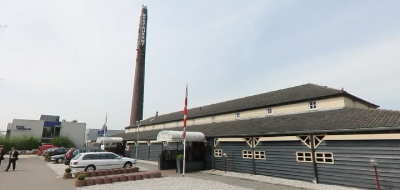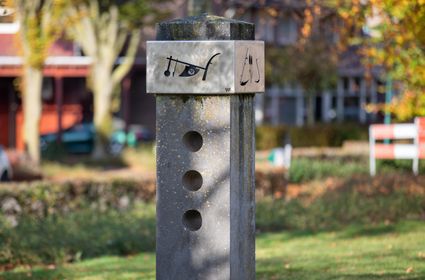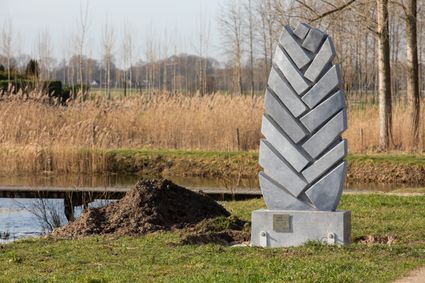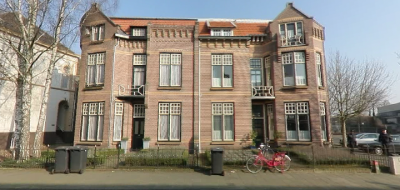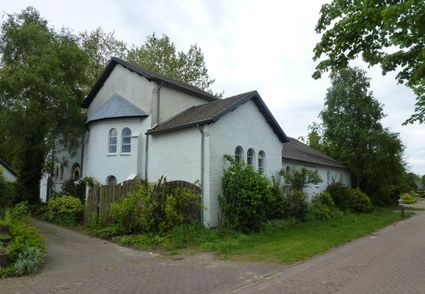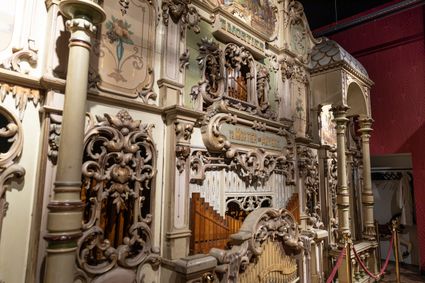Kerk Sint Jans Onthoofding | Gemert
St. Jans Onthoofding church Gemert. The front of the St. Jans Onthoofding church seen from the churchyard. First step to regional religious center.
This church, restored in 2010, dates back to 1437 and is strongly associated with the religious knightly order the Teutonic Order, whose Gemert headquarters the Gemert Castle is located right next to the church. It is dedicated to John the Baptist, an important figure in the Bible who lost his head for denouncing the Roman tetrarch Herod. Besides being the patron saint of this church, St. John is also the patron saint of knife sharpeners, wool weavers, brush makers and the booze fighters. Interestingly, the patron saint of the Bakel church St. Willibrordus is, among other things, the patron saint of beer merchants and innkeepers.
The year of cons…
St. Jans Onthoofding church Gemert. The front of the St. Jans Onthoofding church seen from the churchyard. First step to regional religious center.
This church, restored in 2010, dates back to 1437 and is strongly associated with the religious knightly order the Teutonic Order, whose Gemert headquarters the Gemert Castle is located right next to the church. It is dedicated to John the Baptist, an important figure in the Bible who lost his head for denouncing the Roman tetrarch Herod. Besides being the patron saint of this church, St. John is also the patron saint of knife sharpeners, wool weavers, brush makers and the booze fighters. Interestingly, the patron saint of the Bakel church St. Willibrordus is, among other things, the patron saint of beer merchants and innkeepers.
The year of construction 1437 is of further importance because in that year Gemert became an independent parish. Before that, it was part of the parish of Bakel. This made sense because Bakel was much older than Gemert. However, the Teutonic Order, which was housed throughout Europe and first settled in Gemert in 1220, had grand plans for the village. Land commander Iwan van Cortenbach, the boss of one of the landed estates, Alde Biesen in Belgium, which in turn was divided into 12 commanderies of which Gemert was one, wanted to turn it into a regional religious center. The first step was its own parish. The second was its own church. And then not the existing chapel of the noble Van Gemert family, but its own church. One can imagine that what played through the commander's mind was a variation on bigger, prettier, better.
Extensions after the French
In 1853, the church was expanded considerably. The German Order had packed up and left Gemert, forced to do so by Napoleon's French legions. Church services had suffered greatly under French rule, and when the Netherlands was under Dutch control again, the parish priests did everything they could to regain that lost ground. With success because already in 1840 (the end of the French era came in the Netherlands in 1813) the church had become too small for the number of churchgoers. The church was then extended towards the churchyard, a bell tower was built in and the side aisles on either side of the nave (i.e. the middle part of the church) were widened. It became a waterfront church. The construction of a water state church was under the technical supervision of Waterstaat, following from the increased government involvement in the French era that was retained by the later Dutch kings and queens. The whole after the expansion falls under the style of the, then emerging, neogothic, ornate, strongly ornamental, with its many stone decorations and rank. Neo-Gothicism is a reaction to the severe lines of Neoclassicism, the leading architectural style at the end of the 18th, beginning of the 19th century. Thus, the church in De Mortel is neoclassical. Incidentally, the Gemert church seems to be inspired by the English rather than the Dutch variant of neo-Gothicism.
Attached to the church is also a "gerfkamer. What exactly a gerfkamer entails is unknown, though it is clear that the small room with its high painted ceiling has had multiple functions throughout time, from sacristy and oratory to baptistery and possibly also as a "hagioscope" where people with contagious diseases could still receive communion from behind a grille outside the church and glimpse various relics of saints and the like.
Sources:
Thelen, T., In full glory: The church of St Jans Onthoofding at Gemert, 2003, Heemkundekring De Kommanderij, Gemert
Van Zummeren, P., Volkswijsheid van dag tot dag: De eeuwigdurende Volkskalender, 2000, BZZTôH Publishers, The Hague, the Netherlands





